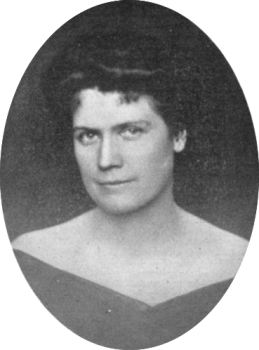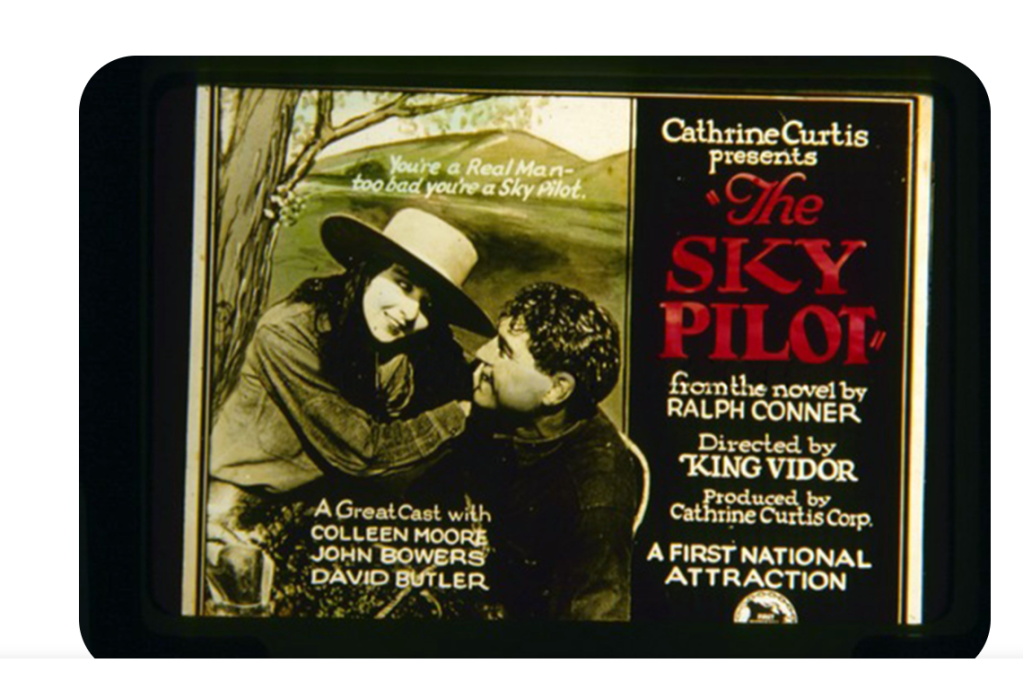
One hundred years ago this week, Grace Kingsley reported on the latest aspiring filmmaker to get a foot in the door:
He being an expert on beauty, it is perhaps natural that Famous Players-Lasky has signed Penrhyn Stanlaws, the well-known artist, whose cover paintings of beautiful women have been seen on virtually all the foremost magazines. He has been engaged on a five-year contract to direct Paramount pictures.
Mr. Stanlaws has been here during the past few months, studying the art of film making at the Lasky studio. But this isn’t all. As an expert on beauty, he is delighted to know that the first star he will direct will be the lovely Betty Compson, who has also lately signed a five-year contract with Famous Players-Lasky. According to the announcement, the first picture by the combination will be an adaptation of the European success by Ernest Klein, entitled At the End of the World.
At least he studied the craft a bit before he got started at the top. Born Stanley Adamson in Dundee Scotland on March 19, 1877 (he changed his name to avoid confusion with his older brother Sydney, also an illustrator), Stanlaws came to the United States in 1901 to study at Princeton University. After further study in Paris, he returned to the US and became a successful magazine illustrator. Jesse Lasky, vice-president of Famous Players, thought that those skills would be easily transferred to filmmaking:
Mr. Lasky is optimistic in regard to Mr. Stanlaws’ ability to direct. “We anticipate,” he said, “great results from Mr. Stanlaws’ artistic ability and his careful and intensive study of motion picture technique. That his efforts will result in productions in which beauty and charm will predominate, seems a foregone conclusion, but this element will be in addition and in conformity to the qualities of human interest involved.

Stanlaws’ previous film experience was limited to appearing as an artist drawing a model in a short, Our Mutual Girl No. 26 (1914), but that didn’t concern him. He spoke to Motion Picture News about his career change:
Mr. Stanlaws’ decision to abandon painting in favor of motion pictures is said to be due to his belief that the production of beautiful motion pictures is more worthwhile than the painting of pretty girls’ heads. “The motion picture, because it is a picture of moving things,” said Mr. Stanlaws, “gives an artist a vastly greater opportunity than oil or watercolor or pen and ink drawings. With the immense worldwide audience which the motion picture affords I do not think an artist or writer can afford to ignore this great artistic force. I have always been a student of the drama and, therefore, am intensely interested in this new great dramatic medium.
Stanlaws directed seven films over the next two years, four starring Betty Compson, two with Bebe Daniels and one with Wanda Hawley. As usual, there were no articles on why he stopped in 1922, but on his way out the door, he wrote an article for Screenland magazine (January 1923) called “What’s the Matter with Our Hollywood Women?” in which he insulted the minor physical imperfections of several actresses. He spared no one: the Gish sisters, Mary Pickford, Viola Dana, Gloria Swanson– all got roasted for the size of their heads or noses, etc. He had nasty remarks about all of the stars he’d worked with: Betty Compson had “muscle-bound hips”which limited her grace and her crooked nose and mouth made her face look whimsical,” Bebe Daniels had a good figure, but she slouched and her nostrils were too small and Wanda Hawley was “too fat” and her ankles were too big. Feh. Just what the world really needed, another middle aged guy passing judgement on young women’s appearances. Tamar Lane in Motion Picture News, after mentioning “Penryhn has the reputation about the studios of being one of the choice limburger directors of the business,” asked some of the women their opinion of him. Betty Compson said, “His ears are musclebound. This greatly limits their graceful action.” Wanda Hawley said, “Mr. Stanlaws is what the camerman terms a ‘N.G.’ He needs to be retaken.” Viola Dana had the best retort: “Mr. Stanlaws has a big head and his hat is too small for him.”

After burning his bridges he moved to an artists’ colony in Woodstock, New York and went back to producing paintings for magazine covers. Marilyn Slater has a brief, illustrated biography of him on her Looking For Mabel site.

Stanlaws wasn’t the only aspiring filmmaker who signed a contract with Lasky that Kingsley reported on this week. The movie bug is so contagious that even respected academics can succumb:
Picturegoers of the nation will soon have the opportunity of seeing the first photoplay from the pen of the first college president to resign his high educational honors to devote his talents to the writing of film stories. Announcement from the Lasky studio is to the effect that “Tall Timbers,” by James A.B. Scherer, will shortly go into production, with Wallace Reid in the leading role.
Dr. James Augustus Brown Scherer was a former Lutheran minister who had been the president of the Throop Polytechnic Institute from 1908-1920. Throop changed its name to California Institute of Technology just before he left. Scherer was the author of several academic books about Japan as well as Cotton as a World Power: A Study in the Economic Interpretation of History. According to an earlier story in the Times, he’d also been writing fiction for years. He’d been on leave from Cal Tech since April, but his physician advised him “it was unwise to go back to his job.” The story also mentioned:
The Scherer contract carries with it the film rights for all his published works and whatever original photoplays he may write during the life of the document, it was stated by Jesse L. Lasky, vice president of the Famous Players concern. Included in it are the stories acquired “The Light of the World,” “The Drama of the April Dawn,” a Civil War story, and “Love at Sea,” a historical treatment of a diplomatic crisis in Japan.
Even college presidents aren’t satisfied with their jobs! Unfortunately, neither “Tall Timbers” nor any of his other stories got made into movies. Scherer’s adventure in Hollywood was politely left out of his obituaries. In 1926 he became the director of Southwest Museum, and he used his expertise in Japan to assist the U.S. Office of War Information during World War 2. He died of heart disease in 1944.
“Artist Will be a Director,” Motion Picture News, June 22, 1920, p.4807.
“Death Takes James A.B. Scherer,” C.I.T. News, March 1944, p.18.
“Dr. Scherer, 73, Ex-President of Caltech, Dies,” Los Angeles Times, February 17, 1944.
“Dr. Scherer Serial Stories,” Los Angeles Times, March 13, 1921.
Lane, Tamar. “That’s Out,” Motion Picture News, March 1923,p.46.
“Scherer Quits as President,” Los Angeles Times, September 13, 1920.
Stanlaws, Penrhyn. “What’s Wrong With Our Hollywood Women, ” Screenland, January 1923, pp. 16-23.
“Tall Timbers by Dr. Scherer To Have Wallace Reid as Star,” Moving Picture World, March 26, 1921, p. 396.























